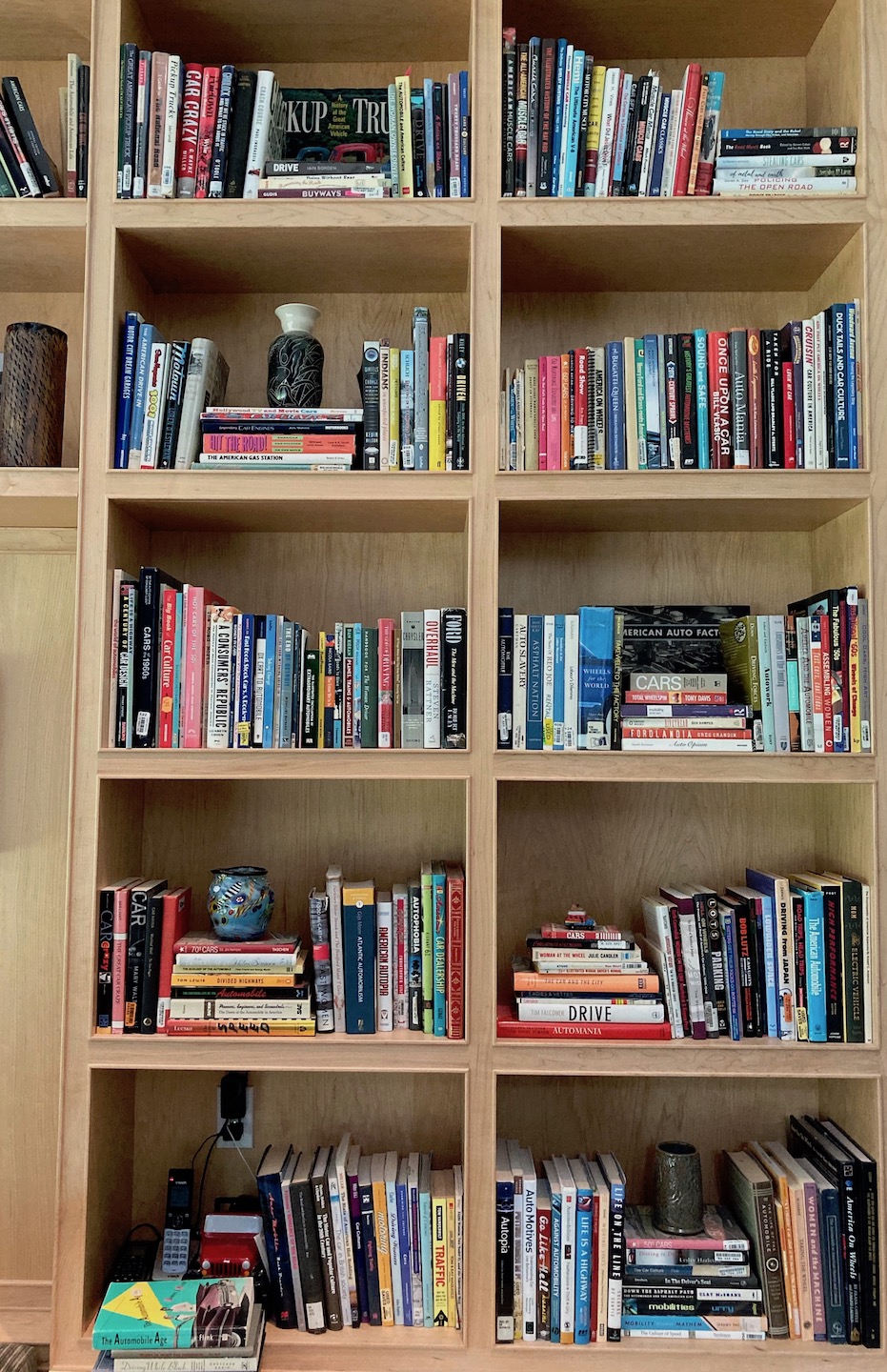One of my favorite auto sites is Jalopnik, self-defined as ‘a news and opinion website about cars, the automotive industry, racing, transportation, airplanes, technology, motorcycles and much more.’ While the site has its detractors, I enjoy it because its staff tends to be younger, more diverse, and dare-I-say less conservative than many of the more traditional online locations devoted to cars. It is part of Go Media, which includes sites devoted to pop culture, feminism, Black news and culture, and irreverent news commentary [e.g. The Onion], which can certainly throw light on its more liberal leanings. While the majority of articles are serious and well-informed reflections on the automobile, the auto industry, and automotive events, at least once a week a story appears that can only be described as ‘fun.’

One of those ‘fun’ articles from last spring was devoted to a collection of rare automotive books – 643 to be exact – that sold for ‘more than the price of a new car.’ In reporting on the sale – as well as her own attempt to acquire the collection through a modest offer [she was significantly outbid]- the author reflected on her own car book collection and her unwavering desire to expand it. Through membership in various automotive organizations, most notably the Society of Automotive Historians – I have come recognize the desire to collect automotive literature to be an obsession, if not an addiction, among a good number of automotive enthusiasts. I myself am somewhat guilty of this need to accumulate car books. While working on my various research projects, I have discovered that it is often easier and less expensive to purchase a book than to track it down at a library, particularly when gas, parking, and time are considered. As I have discovered, purchasing and reselling out-of-date books – not only automotive but an endless selection of subjects – has become its own little industry. While I don’t quite understand how someone can make a profit selling books for less than a dollar, I am more than happy to shell out a buck or two for a volume that might be a useful resource for one of my ongoing or future women-and-car projects. As literature on women’s automotive history is limited, I was thrilled to find a good selection of books on this subject by noted historians and cultural scholars including Virginia Scharff, Katherine Parkin, Georgine Clarsen, Martin Wachs, and Julie Wosk. Books by James Flink, John Heitmann, David Gartman, John Rae, and Gijs Mom have helped me fill in the automotive history blanks in much of my work. When I needed resources on muscle cars, pickup trucks, popular music, and road trip films for papers on those topics, the $2 books picked up by someone from a discarded library collection helped filled the bill. Sometimes I will just scan Amazon with subject headings – e.g. women and cars, car culture, or automotive history – to see if there’s anything of interest I might purchase. My husband, who is more of a mainstream car buff, also collects car books, although his tend to focus on a particular individual, car brand, or historical event. Between the two of us we have quite an eclectic collection of automotive literature, overflowing from a number a few bookcases in our home.
While I originally – somewhat naïvely – thought I was somewhat alone in the auto book obsession, through my various encounters I have discovered car book collecting is a common affliction among car enthusiasts of all interests and persuasions. I daresay it is an addiction I am in no hurry to cure.


